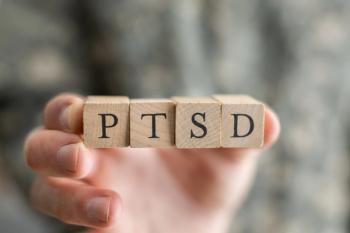
Treatment of Military Populations
What psychiatric illnesses are most prevalent among veterans? And how can clinicians help them overcome obstacles to care?
COMMENTARY
Those who have worked with combat veterans know that they are a group of patients who require a special degree of honesty and compassion. According to the US Census Bureau, there are 18.0 million veterans living in the United States, 17% of whom are women.2 In addition, at any given day, 1.4 million men and women serve on active duty, along with 718,000 civilian personnel. Another 1.1 million Americans serve in the
Unfortunately, institutions charged with caring for veterans are often unhelpful. The Veteran’s Administration’s (VA) lack of transparency is a significant handicap for veterans and family members seeking treatment and explanations for their mental illnesses. Researchers, clinicians, and journalists are unable to find answers to important questions about the impact of war on veterans and their families. How many post-9/11 veterans have been diagnosed and/or treated for posttraumatic stress disorder (PTSD)? How many veterans have been diagnosed with any other mental health-related condition?
It is hard to say. The VA’s annual reports on Analysis of VA Health Care Utilization Among Operation Enduring Freedom (OEF), Operational Iraqi Freedom (OIF), and Operation New Dan (OND) Veterans, stopped being publicly available in 2016. Nevertheless, based on 2015 data, we can say that over a million post-9/11 veterans are using VA healthcare, and mental disorders are prevalent in this population (
Differences in the Treatment of Military Versus Non-Military Populations
After publication of our book,
On the flip side, it is important not to view evidence of resilience or PTG as indicating an absence of mental or physical health-related problems. Another potential mistake is to assume that current or former military personnel must have suffered war trauma, and that is the primary or sole issue that leads them to seek mental health services. In reality, the all-voluntary military faces a wide-range of potential traumatic stressors that are inherent occupational hazards including combat, training accidents, transportation accidents, terrorist attacks, military sexual trauma, victims of crime, natural disasters, humanitarian relief missions, peace-keeping missions, along with other common stressors in the civilian sector (ie, domestic violence, childhood abuse, motor vehicle accidents, betrayal trauma, racial trauma, etc). The wise clinician is alert to the fact that even if a service member is a combat veteran, their distress will likely be a combination of factors, not just a product of combat experiences.
Next, clinicians should be sensitive to a host of risk factors and trauma-related conditions that are not entirely unique to military populations. Like police, federal and state law enforcement, and related professions, combat veterans, may deal with 1) the psychological impact of killing or seeing others killed; 2) having been wounded-in-the line of duty; 3) exposure to the presence of traumatic grief and complicated bereavement of fellow officers or from the death of a loved one, including one’s combat buddies; 4) moral injury from participating or witnessing killings, legal or otherwise; 5) intense survivor guilt, 6) co-occurring traumatic brain injury or phantom limb pain in amputees; 7) posttraumatic anger and sense of betrayal trauma; 8) handling of human remains; 9) being a prisoner-of-war by war enemy, drug cartel, or a political party; 10) chronic pain conditions; 11) opioid misuse; and 12) secondary trauma and compassion fatigue.
Similarly, war has taught us time and again that human beings have manifest traumatic stress injuries. These injuries cross a spectrum of possible conditions, and that diagnosis like PTSD represents only a sliver of possible afflictions.5 Historically, war or other traumatic stress injuries are often divided into 2 broad classifications: 1) neuropsychiatric conditions that consists of the culturally accepted diagnostic labels of the day such as PTSD, mood disorders, anxiety disorders, psychotic disorders, impulse control disorders, substance use disorders, neurocognitive disorders, eating disorders, sexual disorders, personality disorders, and others, and 2) medically unexplained physical symptoms (MUPS) which include chronic fatigue, headaches, chronic pain, atypical cardiac symptoms, idiopathic seizures, autoimmune conditions, and others.5
In the 21st century, the Department of Veterans Affairs
As many clinicians are aware, somatic complaints are often considered a cultural idiom of distress.8 This is particularly true with military populations whereby stigma and fear of career reprisal can be so oppressive. The career-related stress makes it more likely to complain of headaches, back pain, and sleep problems as opposed to emotional symptoms.
Common Obstacles Military Populations Face to Receive Proper Mental Health Care
By far, the biggest obstacle that current and future military populations face regarding mental health care is the pattern of a sustained, self-inflicted mental health crises plaguing generations of Americans and society since World War I.9 These largely preventable catastrophes are caused primarily by chronic neglect and lack of accountability by the military and its government. Our most
1) Recognizing that war inevitably causes large numbers of legitimate spectrum of war stress injury;
2) Adequate research, planning, and preparation are indispensable during both war and peace;
3) A large cadre of well-trained behavioral health specialists is compulsory during times of war and peace;
4) A holistic, public health approach to war stress injuries necessitates close collaboration with the private sector along with full mental health parity;
5) Effective mental health services demand the empowered leadership of an independent, unified, organizational structure, a behavioral Health Corps, providing integrated, well-coordinated continuity of care equal to medical services;
6) Elimination of mental health stigma, barriers to care, and disparity should be a priority for leadership, as it directly affects individuals, families, and military readiness;
7) Ensure ready access to high-quality mental health services, including definitive care prior to military separation or discharge;
8) Families must receive adequate mental health and social support during and after military service;
9) Accurate, regular monitoring and reporting are crucial for timely, effective, management of mental health needs; and,
10) Robust dedicated mental health “lessons learned” policy and programs are integral to meeting present and future needs and prevent crises.10
Despite being learned again at the end of every war, these lessons have not substantially improved veterans’ care. Perhaps the best evidence that little progress has been made comes from a Department of Defense (DOD) Task Force on Mental Health. In 2007 it identified11:
A single finding underpinning all others: The Military Health System lacks the fiscal resources and fully trained personal to fulfill its mission to support psychological health in PEACETIME or fulfill the enhanced requirements imposed during times of conflict (p. ES2).
And also13:
The time for action is now. The human and financial costs of un-addressed problems will rise dramatically over time. Our nation learned this lesson, at a tragic cost, in the years following the Vietnam War. Fully investing in prevention, early intervention, and effective treatment are responsibilities incumbent upon us as we endeavor to fulfill our obligation to our military service members.
This is a stirring plea for action, but the DOD offers no concrete proposal on where to start, or a sense of when we will know when it is enough. Without concrete proposals and ongoing commitment to investing in prevention, early intervention, and effective treatments, pleas like this one will remain empty.
Concluding Thoughts
Have we learned our lessons? More than 6 years into a shooting war, 99 urgent recommendations were made by the DOD task force, all reflecting neglect of the military’s well-documented centuries of “lessons learned.” The media, Congress, and Commander-in-Chiefs alike still have not met their responsibilities to investigate the reasons for gross negligence that harm countless members of the military population for this and future generations.
From our vantage point, the military is positioned in a unique leadership role within the broader society. It could inspire other leaders to step up, be accountable, and finally call for ending the stigma surrounding the mental health of its members. The question remains: why has the US government and its military refused to learn its war trauma lessons and what concrete actions are necessary to end the generational cycle of neglect and crises?
Dr Russell is a retired US Navy Commander and military clinical psychologist with more than 26 years of military service. Dr Figley is the Paul Henry Kurzweg, MD, Distinguished Chair in Disaster Mental Health at Tulane University and founder and director of the Tulane
References
1. Grinker RR, Spiegel JP. Men Under Stress. Blakiston; 1945.
2. Vespa J.
3. Department of Veterans Affairs.
4. Russell MC, Figley CR. Psychiatric Casualties: How and Why the Military Ignores the Full Cost of War. Columbia University Press; 2021.
5. Russell MC, Figley CR. Generational wartime behavioral health crises: Part one of a preliminary analysis. Psychol Inj Law. 2015;8(1):106-131.
6. Hoge CW, Terhakopian A, Castro CA, et al.
7. Frayne SM, Chiu VY, Iqbal S, et al.
8. Hinton DE, Lewis-Fernández R.
9. Russell MC, Figley CR. Investigating recurrent generational wartime behavioral health crises: Part two of a preliminary analysis. Psychol Inj Law. 2015; 8(1):132-152.
10. Russell MC, Figley CR, Robertson KR. Investigating the psychiatric lessons of war and pattern of preventable wartime behavioral health crises. Journal of Psychology and Behavioral Science. 2015;3(1):1-16.
11. Arthur D, MacDermid S, Kiley K, et al.
Newsletter
Receive trusted psychiatric news, expert analysis, and clinical insights — subscribe today to support your practice and your patients.














